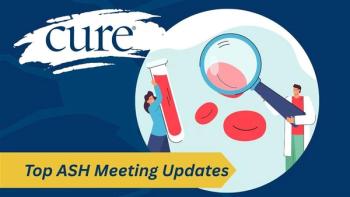
Blincyto Nears Approval for Treatment of Pediatric Acute Lymphoblastic Leukemia
The FDA granted Blincyto a priority review for certain pediatric patients with ALL.
Blincyto (blinatumomab) was granted a priority review to an application to expand the approval of the drug for pediatric and adolescent patients with Philadelphia chromosome-negative (Ph-) relapsed or refractory B-cell precursor acute lymphoblastic leukemia (ALL).
The supplemental biologics license application (sBLA) was based on data from a single-arm phase 1/2 trial, known as study 205, which met its primary phase 2 endpoint of complete remission (CR) within the first two cycles of Blincyto, according to Amgen, the manufacturer of the anti-CD19 immunotherapy.
The priority review program provides an expedited approval process for treatments that provide a substantial benefit over current options. The FDA is scheduled to make its final decision by Sept. 1, 2016.
“Children and adolescents with ALL who experience a second or greater relapse or are refractory often have a dismal prognosis with survival rates below 10 percent,” Sean E. Harper, executive vice president of Research and Development at Amgen, said in a press release. “The FDA's acceptance of the sBLA submission for Blincyto reinforces immunotherapy as a potential option for children in need of new treatments to fight this complex disease and help prevent further relapse."
Study 205 is a multicenter, dose-finding, efficacy trial that accrued patients under 18 years old with Ph- B-cell precursor ALL that was refractory, had relapsed at least twice, or relapsed after an allogeneic hematopoietic stem cell transplantation (HSCT). Following the phase 1 portion of the study, the recommended Blincyto regimen proposed by an independent monitoring panel for phase 2 was stepwise dosing of 5/15-μg/m²/day.
All patients in the trial have completed therapy and are being observed for long-term outcomes. The data are being submitted for publication, Amgen reported.
The most common grade 3 or higher adverse events (AEs) among the 70 patients receiving the recommended dose were anemia, thrombocytopenia, febrile neutropenia, hypokalemia and neutropenia. Serious AEs were comparable to those previously reported for Blincyto in adult patients.
Following a breakthrough therapy designation in July 2014, the FDA granted Blincyto an accelerated approval for adult patients in this setting in December 2014, based on phase 2 data demonstrating strong clinical activity with the agent.
In the pivotal phase 2 study, the CR rate was 32.4 percent, the CR with partial hematological recovery (CRh) rate was 9.2 percent, and the combined CR/CRh rate was 41.6 percent. Overall, 80 percent of patients who achieved a CR also responded by minimum residual disease (MRD) testing. Approximately 39 percent of patients who achieved a CR/CRh went on to receive an HSCT.
The most common all-grade AEs were pyrexia (62 percent), headache (36 percent), peripheral edema (25 percent), febrile neutropenia (25 percent), nausea (25 percent), hypokalemia (23 percent), rash (21 percent), tremor (20 percent) and constipation (20 percent). In all, three patients experienced treatment-related grade 5 AEs: two experienced sepsis and one experienced candida infection.
Neurological side effects occurred in approximately 50 percent of patients. Additionally, 11 percent experienced cytokine release syndrome. To address these side effects, the FDA approved Blincyto with a Boxed Warning and Risk Evaluation and Mitigation Strategy (REMS).
In February 2016, Amgen reported that the confirmatory phase 3 TOWER study was halted after an independent panel determined that Blincyto improved overall survival (OS) versus standard chemotherapy in patients with Ph- relapsed/refractory B-cell precursor ALL.
The open-label phase 3 TOWER trial randomized patients in a 2-1 ratio to Blincyto or investigator’s choice of one of four standard chemotherapy regimens. The primary endpoint was OS. Secondary endpoints included CR, duration of CR, patients achieving remission with MRD, and safety. The data from TOWER will be presented at an upcoming scientific meeting, according to Amgen.
Blincyto is a recombinant, single-chain monoclonal antibody that possesses antigen-recognition sites for CD3 and CD19. The CD3 complex consists of T cell surface glycoproteins, while CD19 is a tumor-associated antigen. The combination of these recognition sites into one therapy is thought to promote cytotoxic T lymphocyte and helper T lymphocyte activity against CD19-expressing B lymphocytes.





